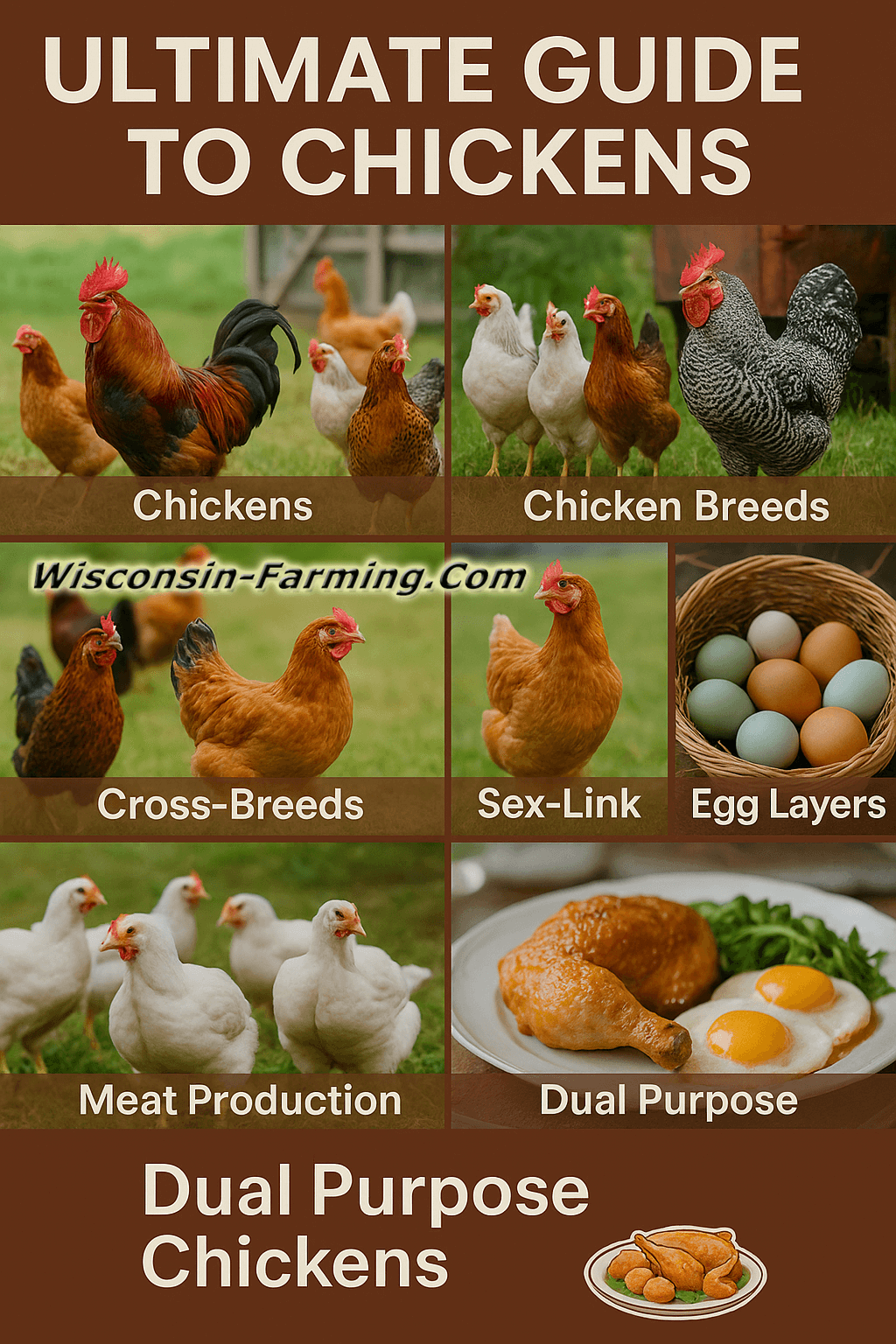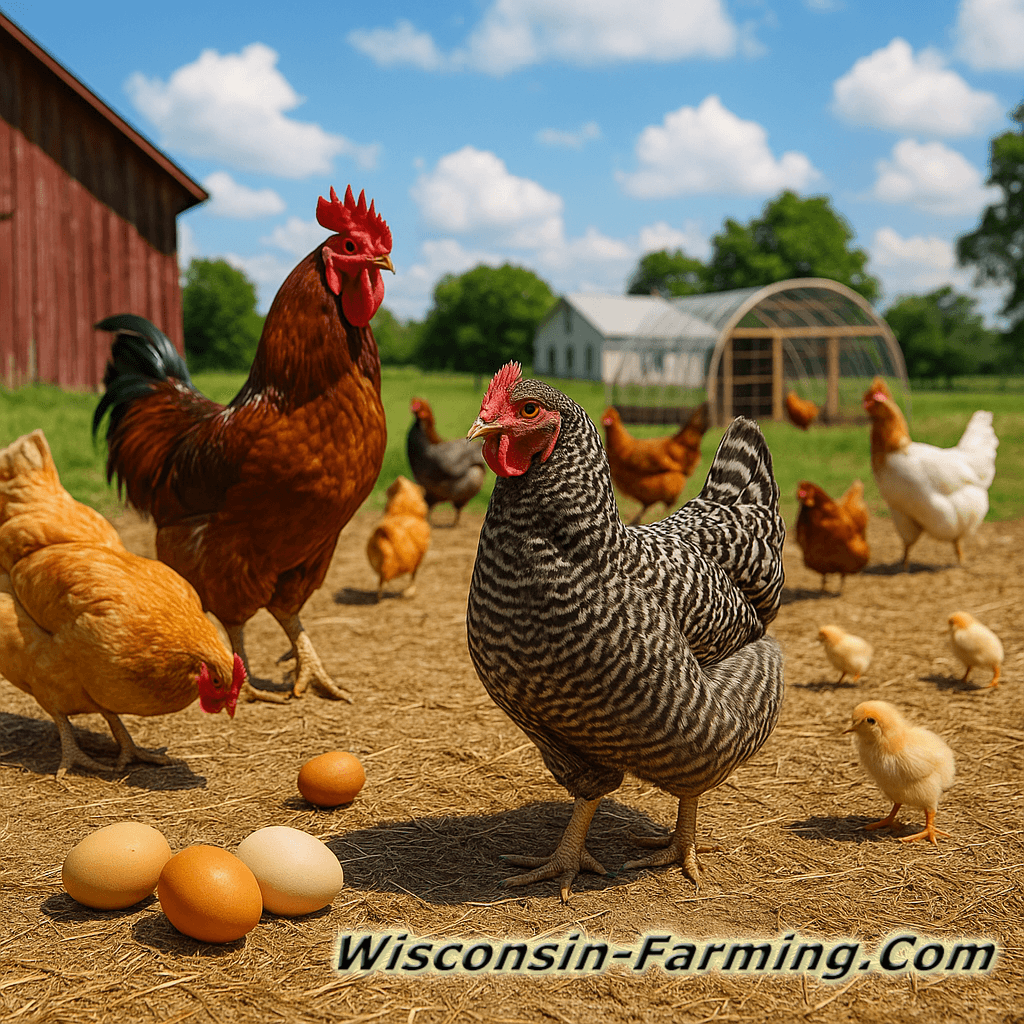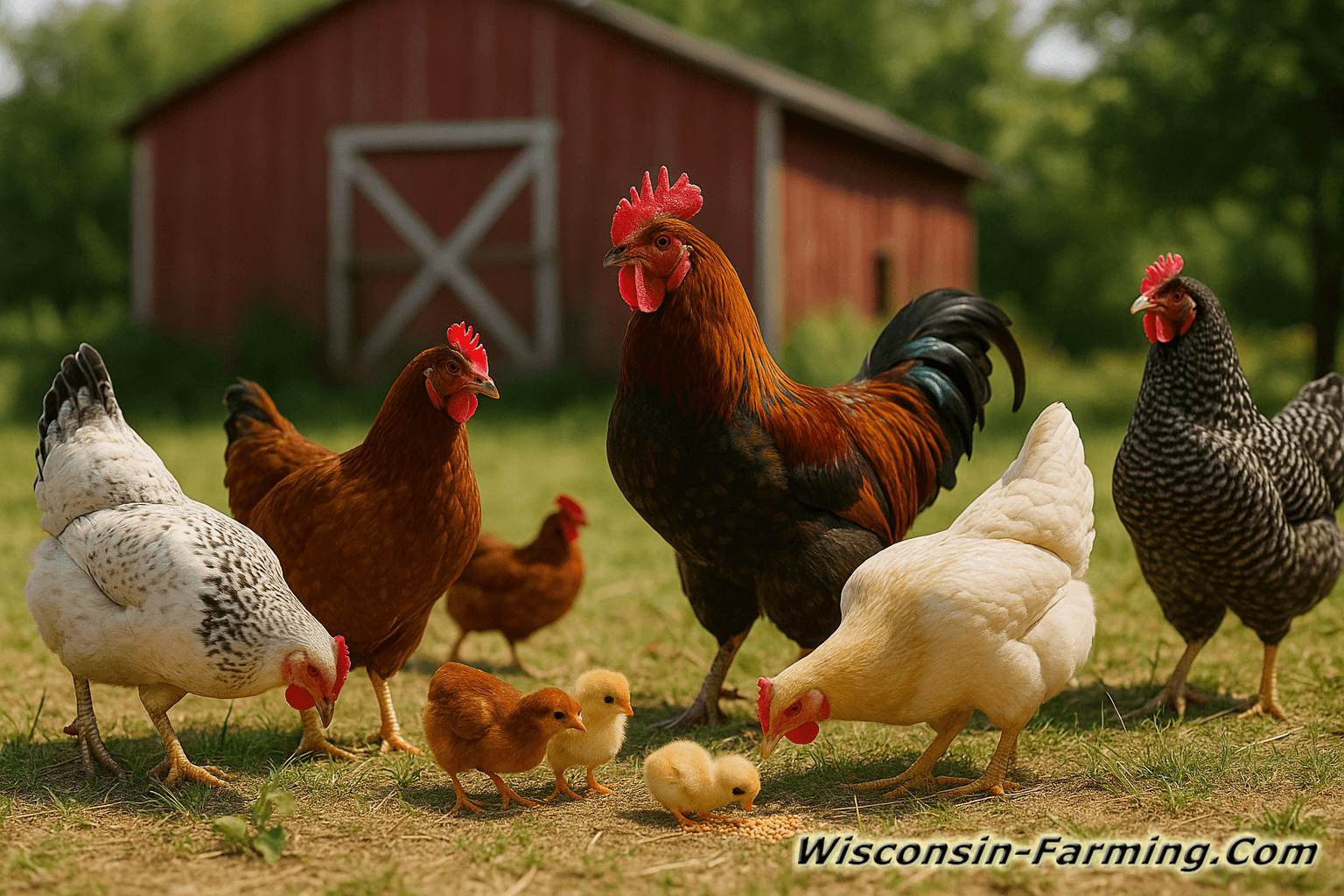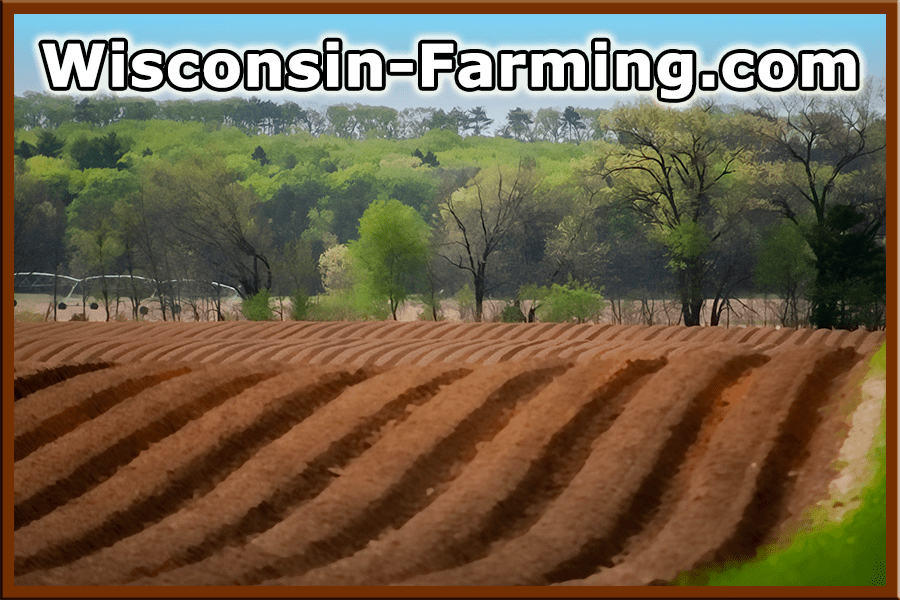Chickens
The Ultimate Guide to Raising, Breeding, and Enjoying Backyard Poultry
Chickens are among the most beloved and practical domesticated animals worldwide. Their importance spans centuries, cultures, and climates, and today, they serve an ever-growing community of backyard enthusiasts, homesteaders, educators, and small farmers. Whether raised for eggs, meat, companionship, or sustainability, chickens offer a remarkable combination of simplicity and diversity. This guide introduces all the core topics every chicken enthusiast should explore, while also offering a regional lens into raising chickens in Wisconsin.
Chickens > Chicken Breeds - Heritage | Cross-Breeds | Sex-Link Hybrid | Egg Layers | Meat Production | Dual Purpose
Why Chickens Are So Popular in Wisconsin
Chickens are one of the most accessible animals to raise, even for beginners. Their manageable size, modest needs, and incredible productivity make them a staple in both rural and urban settings. Fresh eggs, homegrown meat, pest control, and natural fertilizer are just a few reasons why chicken keeping has surged in popularity across the U.S. They can also be quite social, entertaining, and even affectionate, often becoming family favorites.
More than that, chickens have cultural value — appearing in everything from religious symbols to folk tales. Today, they’ve found new relevance in a world seeking sustainability, food independence, and a deeper connection with nature.

The Wide World of Chicken Breeds
With over 500 recognized chicken breeds and varieties, choosing the right one can be both exciting and overwhelming. Chickens vary in egg color, meat quality, size, temperament, hardiness, and more. Breeds fall into broad categories such as:
- Heritage Breeds – Traditional breeds with long histories, slower growth, and natural reproduction traits.
- Cross-Breeds – Hybrids created to maximize specific traits like fast growth or high egg production.
- Sex-Link Hybrids – Special crosses that allow for gender identification at hatch and excel in productivity.
- Egg Layers – Known for producing abundant eggs; includes Leghorns, Australorps, and others.
- Meat Chickens – Bred for size and fast growth, like the Cornish Cross.
- Dual-Purpose – Versatile breeds good for both eggs and meat, such as Plymouth Rocks and Orpingtons.
Each category offers options suited to different climates, goals, and management styles.
Chicken Care Basics: What Every Keeper Should Know
Raising chickens begins with responsible care. Key elements include:
- Coop & Run Design: Chickens need shelter from weather and predators, as well as good ventilation and nesting boxes.
- Feeding & Nutrition: Balanced poultry feed, scratch grains, grit, calcium, and fresh water are essential.
- Health Monitoring: Watch for parasites, injuries, and common diseases like coccidiosis or respiratory issues.
- Daily Maintenance: Regular egg collection, waste removal, and feed checks are crucial for flock health.
Additionally, providing enrichment like dust-bathing areas, foraging space, and perches keeps chickens healthy and content.
Understanding Chicken Behavior
Chickens live in social hierarchies, commonly known as the "pecking order." They communicate through vocalizations, postures, and body movements. Learning how chickens interact helps owners manage flocks better. Aggression, broody behavior, and molting cycles are part of the natural lifecycle. Some breeds are friendlier or quieter, making them ideal for backyard flocks or urban areas.

Eggs: Nature's Perfect Food
Egg-laying begins around 18 to 22 weeks of age and varies by breed. Egg colors range from white and brown to blue, green, and even speckled. Factors influencing egg production include daylight, diet, health, and breed genetics. Chickens usually slow down egg laying during winter or molting.
Many chicken keepers enjoy the satisfaction of collecting fresh, home-laid eggs daily. These eggs are often more flavorful and nutritious than store-bought ones.
Chickens for Meat
Wisconsin Meat chickens, or "broilers," are typically raised for fast growth and processed around 6–12 weeks of age. While commercial strains like the Cornish Cross dominate the industry, slower-growing heritage breeds are favored by small farms and gourmet chefs for their flavor and texture.
Pasture-raised and ethically processed meat birds offer a sustainable alternative to industrial poultry farming. Backyard meat production empowers food independence and ethical animal husbandry.

Wisconsin Chickens: Local Considerations
In Wisconsin, chicken keeping thrives in both urban and rural communities. The state’s harsh winters make cold-hardy breeds essential. Birds like the Wyandotte, Buckeye, and Chantecler have small combs and dense feathering, making them ideal for frigid conditions. Coops should be well-insulated but ventilated to prevent frostbite.
Wisconsin also has a strong tradition of agricultural fairs, 4-H poultry clubs, and backyard homesteading. Local laws vary, so urban chicken keepers should consult municipal ordinances before starting a flock. Additionally, Wisconsin offers rich access to local hatcheries, organic feed mills, and small-scale breeders.
Getting Started with Chickens
If you're considering chickens, start with a small flock of 4–6 birds. Choose breeds based on your goals: egg-laying, meat, temperament, or cold resistance. Invest in a sturdy, predator-proof coop, learn basic flock management, and join local or online chicken-keeping communities for support.
Books, YouTube tutorials, extension office classes, and experienced breeders can provide hands-on education. Over time, your skills and flock may grow — turning a simple interest into a rewarding lifestyle.
Chickens and Sustainability
Chickens play a central role in permaculture systems. They eat kitchen scraps, fertilize gardens, reduce pests, and provide food. A well-managed flock creates a closed-loop system, reducing waste and supporting regenerative agriculture. More families, schools, and homesteaders are discovering that chickens aren't just pets or producers — they’re partners in a healthier planet.

Conclusion
Chickens are an extraordinary entry point into farming, food security, and sustainable living. Their care is manageable, their personalities are delightful, and their benefits are unmatched. Whether you’re raising heritage breeds in rural Wisconsin or starting a backyard flock in the city, chickens offer a daily connection to nature, nourishment, and a slower, more meaningful way of life.
This anchor page is your gateway to the entire world of chickens. Explore our dedicated guides on breeds, eggs, hybrids, meat production, and more to find the best birds for your flock and your future.


 And then Add to Home Screen.
And then Add to Home Screen.